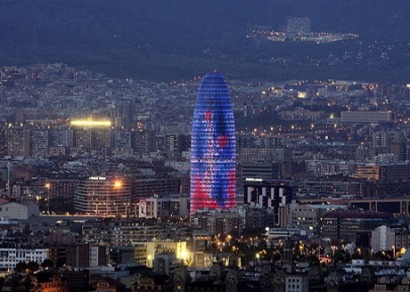
The survey of nearly 4,000 building owners and operators around the world was led by Johnson Controls’ Institute for Building Efficiency, the International Facility Management Association and the Urban Land Institute.
“We are seeing record levels of energy management and reduction projects around the world, driven mainly by financial reasons, more than environmental concerns,” said Dave Myers, vice president and president of Building Efficiency for Johnson Controls. “Regardless of the motivations, buildings account for 42 percent of global energy usage, so the growing trend of making buildings more energy efficient is smart business, helps create local-market jobs, and benefits the environment. We applaud building owners for stepping up efforts to make their facilities more energy efficient and sustainable.”
Although the primary motivation for energy efficiency projects continued to be energy cost savings, government incentives and enhanced public image were also important, ranking second and third in the survey. Greenhouse gas reduction, which ranked as the second highest motivator in 2010, ranked fourth in 2011.
Ambitions thwarted by lack of funding
Rising energy costs are clearly on building owners’ minds. Eight in 10 respondents expect double-digit energy price increases over the next year. As a result, owners have set an average energy reduction target of 12 percent.
But significant obstacles exist to meeting these ambitious goals. Access to funding and financial returns were cited as the top barriers globally. Indeed, barriers to capital access topped the list for respondents in the US/Canada (38%) and Europe (30%).
“This year’s survey clearly shows that there’s growing urgency in making buildings more energy efficient, and large strides have been made with the help of government incentives,” Myers said. “However, building owners continue to tell us that access to capital remains the top barrier for improving energy consumption. By making funding more accessible, policymakers have a tremendous opportunity to influence the achievement of their energy and environmental goals.”
Here are further insights into what building owners and operators are saying around the world:
• Seven in 10 – up from six in 10 – indicate that energy management is important to them, with respondents in India (89%) and China (85%) expressing the most interest, followed by US/Canada (66%), and Europe (61%).
• Three out of four have set energy or carbon reduction goals.
• Nearly four in 10 have achieved at least one green building certification, twice as many as the prior year. An additional 32 percent (32%) have incorporated green building elements.
• Building owners planning to pursue green building certifications for existing buildings (39%) slightly outpaced those with plans to certify new construction (35%).
• Lighting and heating, ventilation, air conditioning and controls improvements continued to be the most popular energy efficiency improvements made last year.
• Building owners have greater access to energy data, but few are taking advantage of it. More than eight in 10 measure and record data at least weekly or monthly, but fewer than two in 10 review and analyse that data at least weekly.
Those who have implemented smart grid/smart building technology such as advanced energy metering and management systems are nearly 3 times more likely to review and analyse their data frequently.
• Organizations that set a reduction goal, analyse energy data frequently, add internal or external resources and use external financing were found to implement four times s many improvement measures as those who did none.
Highlights of the survey results for North America show a double-digit increase in US/Canada building owners who believe energy management is important (66%) compared to the prior year (52%). Building owners expect lighting and smart building technology to have greater adoption rates over the next ten years than renewable energy technologies in the US/Canada. Seventy-seven percent (77%) of US/Canada building owners plan to include green building elements in their facility plans in the next 12 months. Efficiency in buildings remains the top global strategy for reducing greenhouse gas emissions led by the US/Canada (52%) and then Europe (28%), China (27%) and India (24%).
“These survey results speak to an increasing number of building owners and operators turning to smart, high-performance building technology to achieve their energy efficiency goals,” said Tony Keane, CAE, president and CEO of the International Facility Management Association. “Managing and operating buildings at peak efficiency will require facility professionals to strengthen their skill sets to successfully utilize these complex building technologies. As more high-performance buildings come online over the next decade, training and credentialing will play an essential role in helping facility professionals manage these buildings at optimal performance levels.”
This year marks the first time survey respondents include members of the Urban Land Institute (ULI), which has an on-going program of work dedicated to energy-saving urban development practices, including both building and location efficiency. “This survey identifies building performance and financial innovations that are applicable to both new and existing buildings and all segments of the real estate marketplace,” said ULI Chief Executive Officer Patrick L. Phillips. “The real estate industry is demonstrating leadership in the quest to find an appropriate balance between energy use and sustainable communities.”
For additional information:

